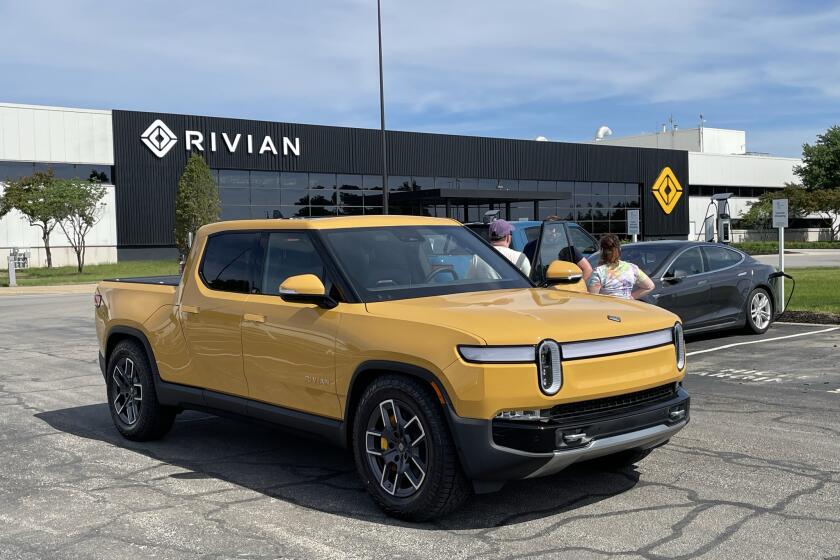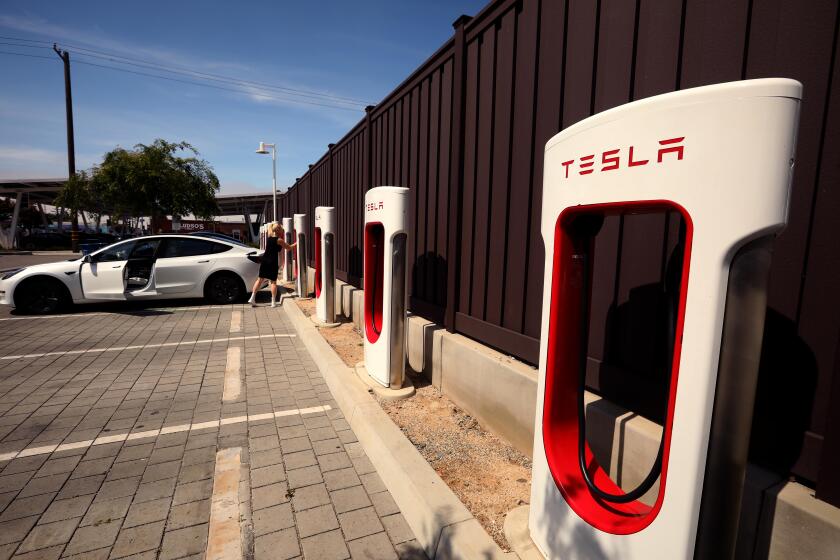Ford works to be Texas’ lone star in big trucks
Ford Motor Co. picked San Antonio for the launch of its redesigned and re-engineered F-150 pickup in part because the Lone Star State, particularly the central Texas ranch country, buys more F-Series trucks than any other part of the country.
And Southern California is the second-largest market in large part because of our urban cowboys’ and cowgirls’ appetites for the light-duty F-150 pickups.
But Ford also was responding to a challenge.
Toyota announced this year that it would build a plant in San Antonio to boost production of its Tundra pickup, and Ford couldn’t let that slap in the face go unanswered.
So Ford’s advance men trudged all over the Texas hill country around San Antonio, asking ranchers and city fathers in the small towns that dot the region for permission to plaster the region with Ford banners.
They got it, in spades.
“Fortunately, there are a lot of Ford people here,” said Frank Davis, chief engineer for the F-150.
Indeed, Ford signs were everywhere, the Blue Oval and “BFT” -- Built Ford Tough -- symbols on barn roofs and garage walls, on the weathered wood siding of the oldest dancehall in Texas in the town of Gruene (pronounced “Green”), on banners stretched across the highway and on water towers standing sentry above half a dozen town halls.
The region also was peppered with rows and rows of Ford-blue advertising signs posted roadside like the Burma Shave shaving cream signs of old: Half a pound / For half a dollar / Spread on thin / Above the collar / Burma-Shave.
Unfortunately, the folks at Ford can’t rhyme, and most of their signs read like the cardboard they were printed on: Things are / Tougher / All over / The next F-150 / Now 2X stronger / BFT.
Let’s hope the wordsmiths didn’t do the F-150 engineering as well.
*
A novel solution in the hub
Engineers at General Motors Corp. have developed a new twist on the hybrid. Models now available, including the Toyota Prius, combine gasoline engines and electric motors on the main driveline.
The new GM system, developed at the company’s Advanced Technology Center in Torrance, moves the electric motors to the wheels.
They are called wheel hub motors and can dramatically increase torque, or pulling power, while reducing fuel consumption and improving traction.
As a result, a vehicle with a four-cylinder gasoline engine augmented with a pair of wheel hub motors could perform as if it had a V-6, says GM research and development chief Larry Burns.
The system would work in front-wheel drive cars and rear-wheel-drive pickup trucks, turning them into all-wheel-drive vehicles by adding power from the wheel hub motors to the wheels that aren’t driven by the standard power plant.
“This breakthrough technology may enable us to build some pretty exciting future vehicles that have the potential to be as quick as a sports car while providing significant fuel economy improvements,” Burns said.
A pair of wheel motors generates about 180 horsepower and boosts torque by about 60%, he said.
Although the main application would be on gas- or diesel-electric hybrids, GM used an all-electric Chevrolet S-10 pickup for the prototype.
Irvine-based Quantum Technologies, a GM partner in alternative fuel systems development (GM owns 19.9% of the company), modified a standard S-10 electric pickup’s coolant, power and electrical systems; developed a special motor controller and related software; and built the prototype using wheel hub motors made by an Italian electronics firm.
Burns says GM envisions producing all-wheel-drive gasoline-electric hybrids by 2010 and that the wheel motors would probably be part of GM’s fuel cell powertrain.
*
Still in love with the SUV
There’s been a lot of campaigning in the last six months against sport utility vehicles, as religious groups, environmentalists and safety advocates all have piled on.
SUVs gulp too much gas and emit too many pollutants, and they aren’t fair to smaller vehicles and their occupants in collisions, the complaints go.
But are we listening?
Well, for the first six months of 2003, SUVs accounted for almost 25% of all new passenger vehicle sales in the country -- a record.
Consumers purchased slightly more than 2 million sport utes, up 9% from 1.85 million in the first six months of 2002, according to J.D. Power & Associates.
Of the four SUV segments -- full-size, luxury, mid-size and entry-level -- only the full-size group lost market share, with a 5% sales decline. That segment includes some of the most criticized vehicles, including the Ford Expedition, Toyota Sequoia and Chevrolet Tahoe.
But demand for luxury SUVs soared 53%, led by the Lexus RX 330, Acura MDX and Lincoln Navigator. Sales of entry-level SUVs, a category that includes the Honda CR-V, Toyota RAV4 and Ford Escape, rose 13%.



